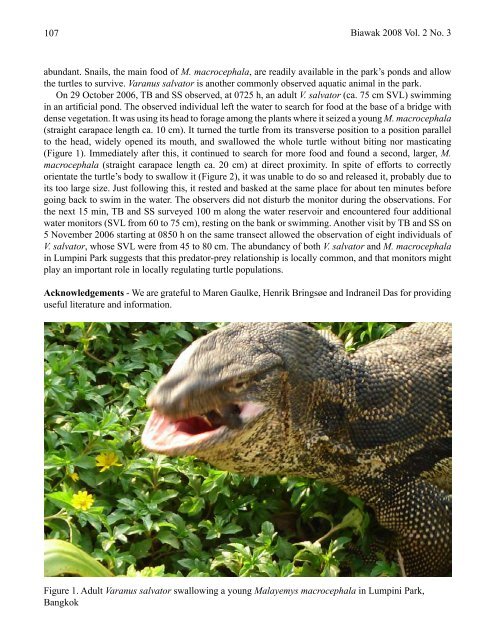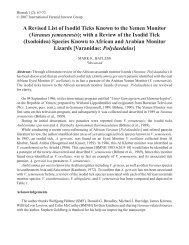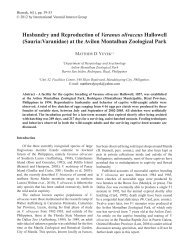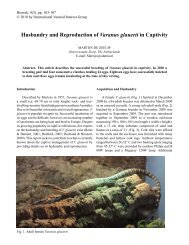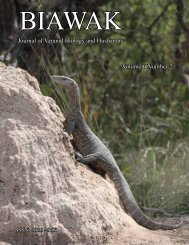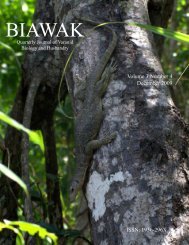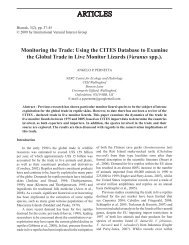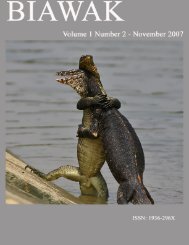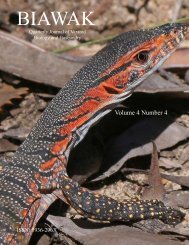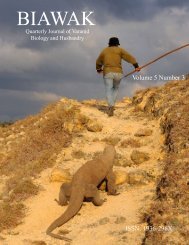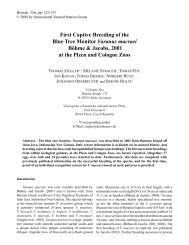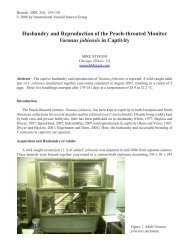Volume 2 Number 3 - International Varanid Interest Group
Volume 2 Number 3 - International Varanid Interest Group
Volume 2 Number 3 - International Varanid Interest Group
Create successful ePaper yourself
Turn your PDF publications into a flip-book with our unique Google optimized e-Paper software.
107Biawak 2008 Vol. 2 No. 3abundant. Snails, the main food of M. macrocephala, are readily available in the park’s ponds and allowthe turtles to survive. Varanus salvator is another commonly observed aquatic animal in the park.On 29 October 2006, TB and SS observed, at 0725 h, an adult V. salvator (ca. 75 cm SVL) swimmingin an artificial pond. The observed individual left the water to search for food at the base of a bridge withdense vegetation. It was using its head to forage among the plants where it seized a young M. macrocephala(straight carapace length ca. 10 cm). It turned the turtle from its transverse position to a position parallelto the head, widely opened its mouth, and swallowed the whole turtle without biting nor masticating(Figure 1). Immediately after this, it continued to search for more food and found a second, larger, M.macrocephala (straight carapace length ca. 20 cm) at direct proximity. In spite of efforts to correctlyorientate the turtle’s body to swallow it (Figure 2), it was unable to do so and released it, probably due toits too large size. Just following this, it rested and basked at the same place for about ten minutes beforegoing back to swim in the water. The observers did not disturb the monitor during the observations. Forthe next 15 min, TB and SS surveyed 100 m along the water reservoir and encountered four additionalwater monitors (SVL from 60 to 75 cm), resting on the bank or swimming. Another visit by TB and SS on5 November 2006 starting at 0850 h on the same transect allowed the observation of eight individuals ofV. salvator, whose SVL were from 45 to 80 cm. The abundancy of both V. salvator and M. macrocephalain Lumpini Park suggests that this predator-prey relationship is locally common, and that monitors mightplay an important role in locally regulating turtle populations.Acknowledgements - We are grateful to Maren Gaulke, Henrik Bringsøe and Indraneil Das for providinguseful literature and information.Figure 1. Adult Varanus salvator swallowing a young Malayemys macrocephala in Lumpini Park,Bangkok


